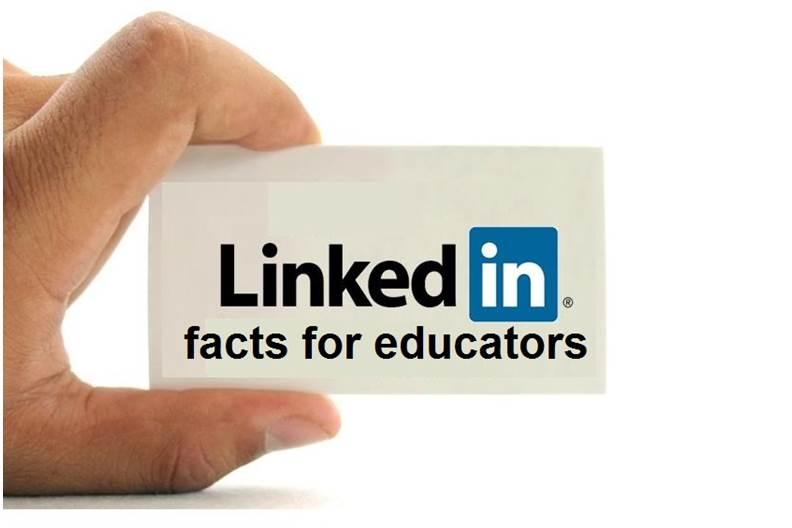LinkedIn is a social networking website for people in professional occupations. Many professionals use LinkedIn as a resource to connect and communicate with other professionals. Job seekers can also contact employers to find the opportunities.
is not just for finding opportunities and improving professional career, it has usage beyond what we just think. Many people fail to realize that the features of LinkedIn are not only for employees in various sectors but also for teachers and educators. Educators or teachers will get expertise by actively participating in several groups of LinkedIn. Let’s see how those features of LinkedIn useful for educators.
There are 5 main categories of LinkedIn.
Profile:
Anyone can register an account in LinkedIn. The first step is creating a profile; you can add study history, work history, current location, stream, skills and expertise, interests and contact details too. The way you create your profile will capture others attention; People will contact you if your profile matches their requirement. Educators can create their resumes, work experiences, areas of interest and subjects in which they have an expertise; this will make administrators to provide you right opportunity and also helps learners to get in touch with you.
Network:
As the name indicates, it’s all about your network. Your network includes colleagues, classmates, seniors, employers, administrators and those who are having something similar to you in a particular aspect. If you’re an educator, you can add your students to provide them guidance, co-educators & administrators to make discussions on relevant issues and also other experts to develop your professional career. It’s having 3 sub categories; connections, imported contacts & profile organizer.
Connections: these are the people whom you’ve already added. You can sort these connections by tags, locations, companies, industries and recent activity of that connection.
Imported contacts: These are the contacts from your mail id.
Profile Organizer: Profile Organizer includes several tools to help you keep track of important profiles.Track important profiles in a dedicated workspace, Organize profiles into your own personal folders and Keep important details that help you manage your outreach.
Jobs:
This is an option for job seekers, Educators can find jobs by adding their expertise subjects to search bar. There will be many advanced search options you can use; you can search an opportunity by location, industry, function and many.
Interests:
This category includes sub categories like companies, groups and influencers.
Companies represent your work history; the updates about the school/college/university you’re presently working. You can search similar companies and follow those companies’ updates which you want to work with. You’ll get to know what’s going on in other educational organizations, you can even implement if anything you find that your organization lacks.
Groups are to interact with other professionals. Educators can find numerous useful groups relevant to their fields, stream, areas of interest, subjects in which they are efficient and those topics they are working on. You can meet many professionals and students even if they are not in your network. You can interact with those people, exchange your knowledge, ask questions and connect with others in the same field. You can participate in discussion forums or post your own articles or researches or projects that can help build your online circle. EduBloggers, Education Community Mangers Network, Technology in Education and many more groups are providing you a great platform for interaction with other educators.
Channels & Influencers :
Stay informed about the things you’re interested in. You can follow Channels related to educational fields and get articles, resources and opportunities from both Influencers and top news sources. This option will help you to get up to date with the field or area of interest or topic you are working for. Let me give you the list of some useful channels related to Educational sector.
Channels for Educators: Higher Education, The Commencement Speeches You Wish You’d Heard, Technology and many.
Influencers:
Get exclusive insights and professional advice from top industry-leading professionals. You can follow those people related to your area of interest and get useful articles.
In the home feed, you’ll see the activities of your connections, groups, channels and influencers. As of June 2013, LinkedIn reports more than 225 million acquired users in more than 200 countries and territories.
LinkedIn constantly updates the platform. There are many other options that you can add to your profile. You can use LinkedIn to connect with other social networking sites like Twitter. You can post events, polls, news or even link your professional profile to your blog or website. You can share your works, events, documents and other info that you want to share with your students or co-educators.
The power of the platform can only be known once you use it. What are your experiences if you already use it?
